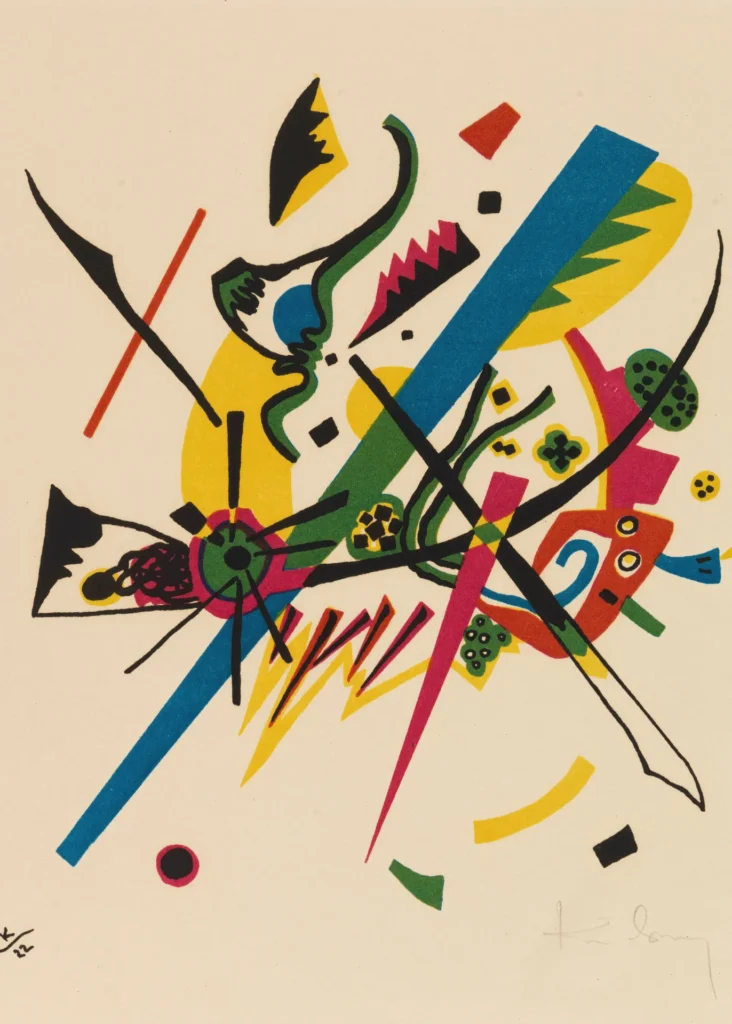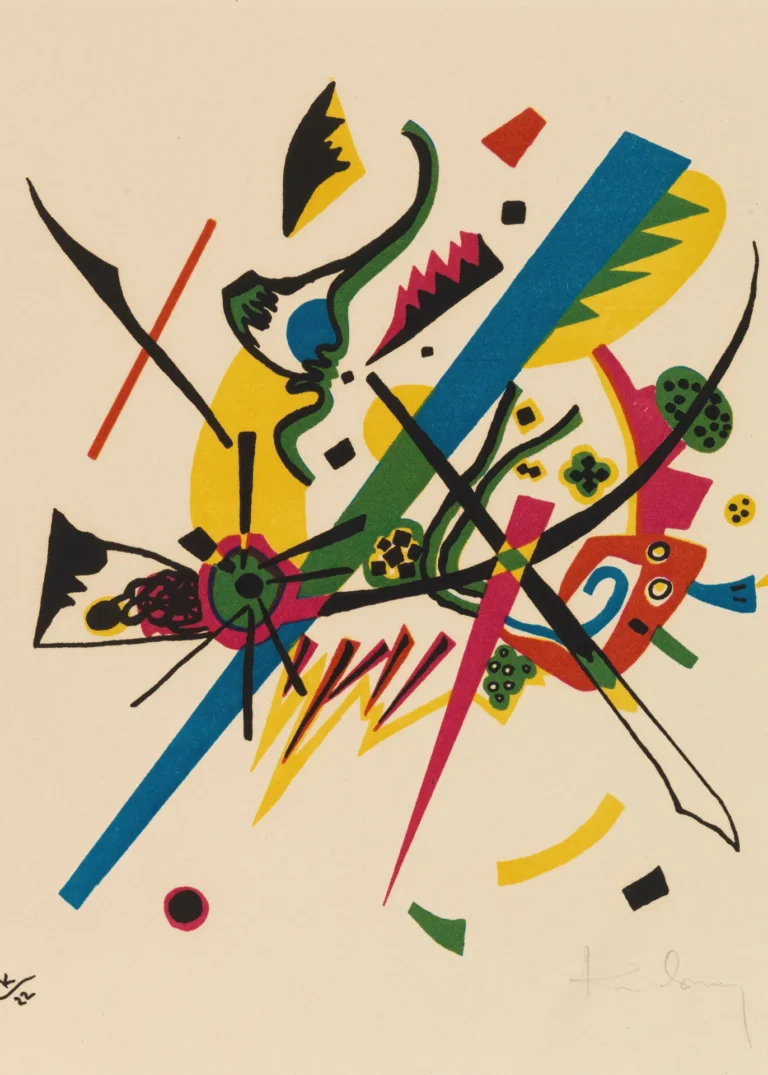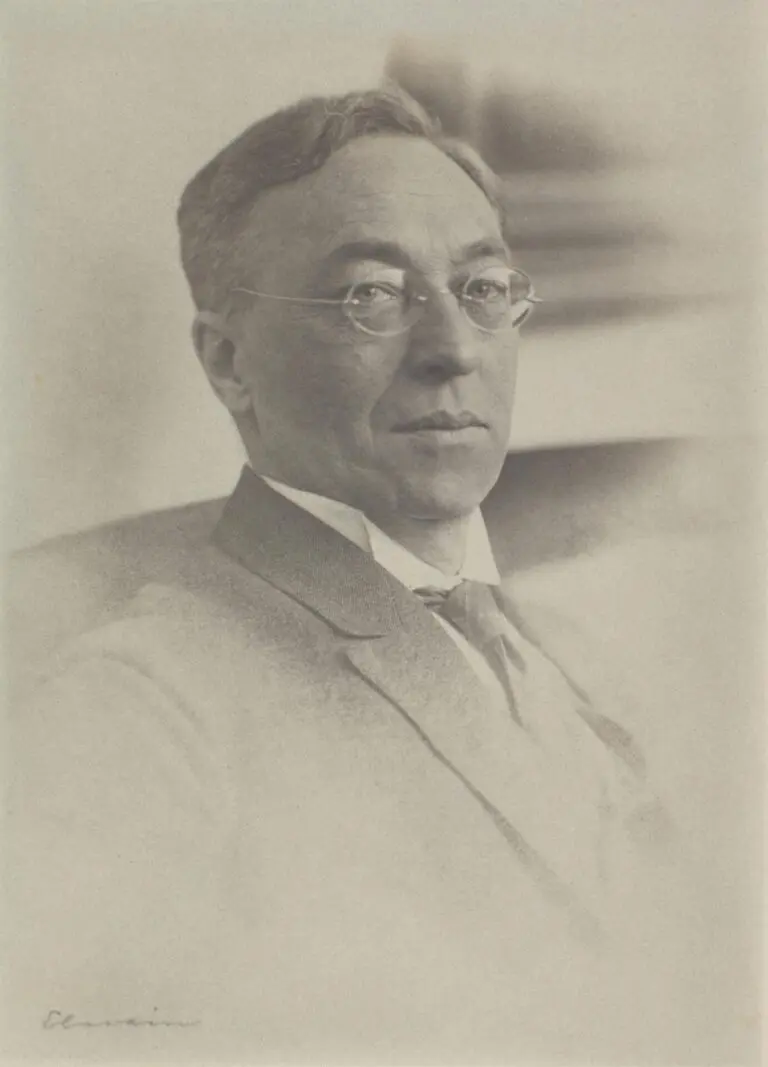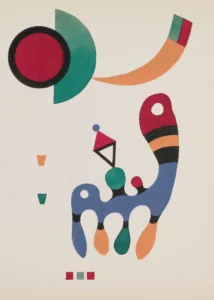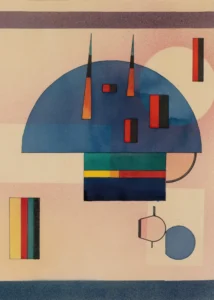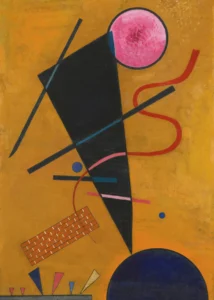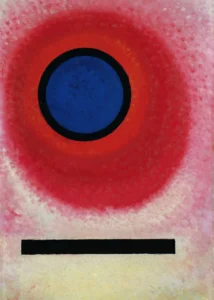Small Worlds I (1922)
Kleine Welten I (Small Worlds I) is a captivating lithograph by Wassily Kandinsky from 1922, part of the 'Small Worlds' series created during his tenure at the Bauhaus. The artwork cleverly employs 'veiling' techniques to blend abstract forms with recognizable urban elements, reflecting Kandinsky's fascination with contemporary design and social ideals following the Russian Revolution. Measuring 14 x 11 inches, this work not only demonstrates his experimental printmaking skills but also serves as a testament to his innovative vision of a connected, modern world.
Year 1922
About the Artwork
The creation of Kleine Welten I aligns with a transformative period in Wassily Kandinsky's artistic journey, coinciding with his teaching role at the Bauhaus school, which greatly influenced modern design and art. During his time at Bauhaus, he sought to push the boundaries of what art could express, integrating different materials and techniques into his printmaking. The lithographs of the Kleine Welten series showcase his unique ability to bridge the gap between abstraction and the familiar, as he combines elements reminiscent of urban environments with ethereal, almost dreamlike forms. This artwork captures a moment in the early 20th century when artists began to rethink the relationship between art, society, and urban life in post-revolutionary Russia, promoting ideals of harmony and community through visual means.
Did You Know
Liked what you see? Add it to your collection.
Enjoyed reading? Share it.
... continued
'Kleine Welten I' (Small Worlds I), created by Wassily Kandinsky in 1922, is part of a larger series titled 'Kleine Welten' (Small Worlds). Here are some key points about this artwork:Series and Context
The series 'Kleine Welten' was produced shortly after Kandinsky began teaching at the Bauhaus in Weimar, Germany. This period was significant for Kandinsky, as it marked his involvement with the progressive arts and crafts school.
Techniques and Medium
The series includes prints created using various techniques such as etching, woodcut, and lithography. Kleine Welten I specifically features lithographs, showcasing Kandinsky's experimentation with different printmaking methods.
Artistic Style and Themes
These prints illustrate Kandinsky's use of 'veiling' techniques, where abstract compositions gradually reveal identifiable figures and objects. The works often blend nonobjective, polymorphic forms with elements of the built environment, such as towers, railways, and grid patterns. This blending reflects Kandinsky's interest in contemporary urban design and utopian planning, particularly influenced by Russian experiments post-1917 Russian Revolution.
Dimensions and Materials
The lithographs in the series are relatively small, with Kleine Welten I measuring approximately 14 x 11 inches (36.2 x 27.9 cm) and printed on Japon paper.
Exhibitions and Collections
Works from the 'Kleine Welten' series are held in various collections, including the Museum of Modern Art (MoMA) and the Mildred Lane Kemper Art Museum at Washington University in St. Louis. They have been featured in several exhibitions, such as 'Tempus Fugit: Time Flies' at the Nelson-Atkins Museum of Art and 'Models and Prototypes' at the Kemper Art Museum.
Signature and Edition
The prints are signed by Kandinsky, with the inscription 'K 22' in the lower left corner and 'Kandinsky' in the lower right corner. The edition size for the series is 200.
Overall, Kleine Welten I is a significant work that showcases Kandinsky's innovative use of printmaking techniques and his exploration of abstract and utopian themes.




